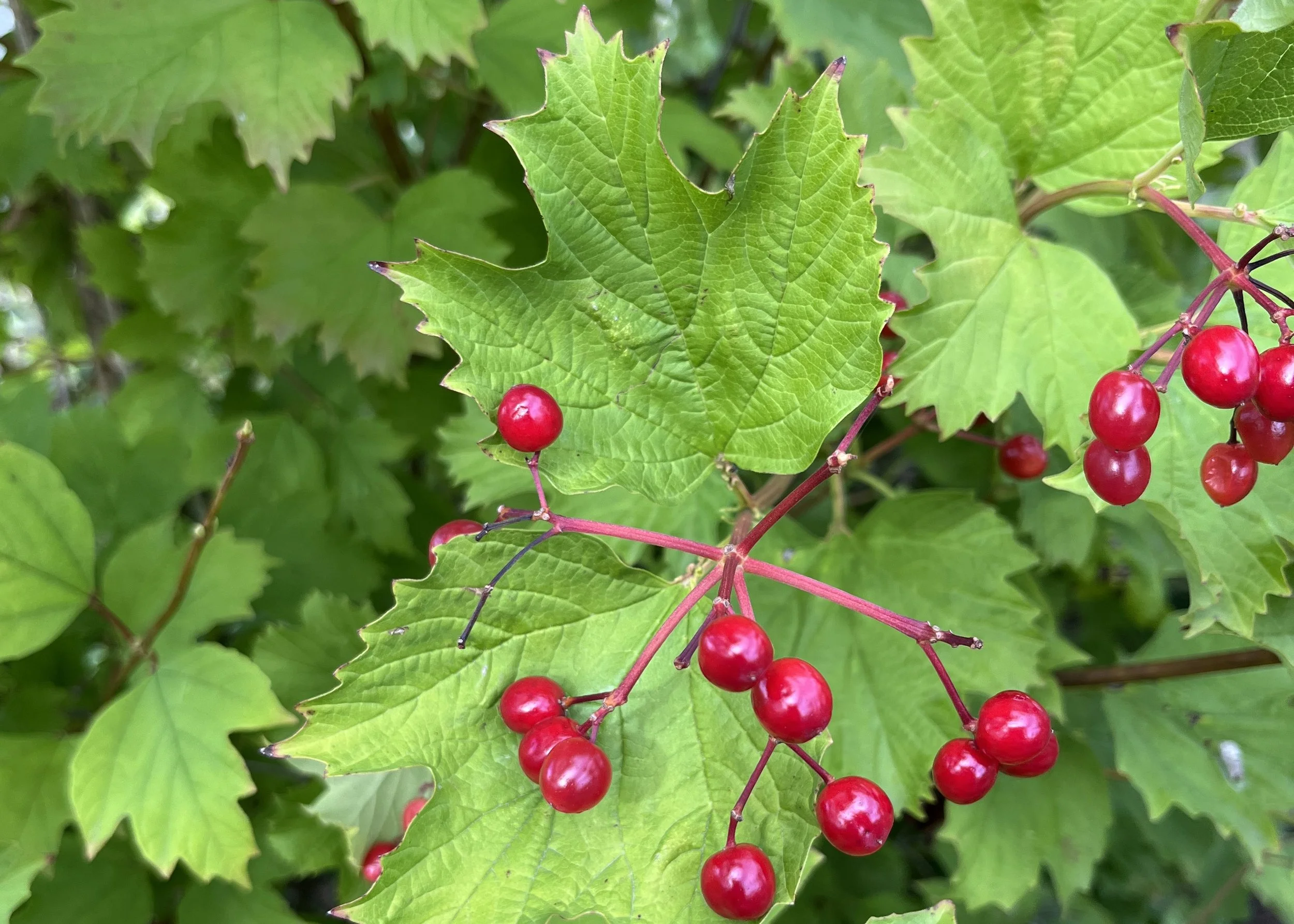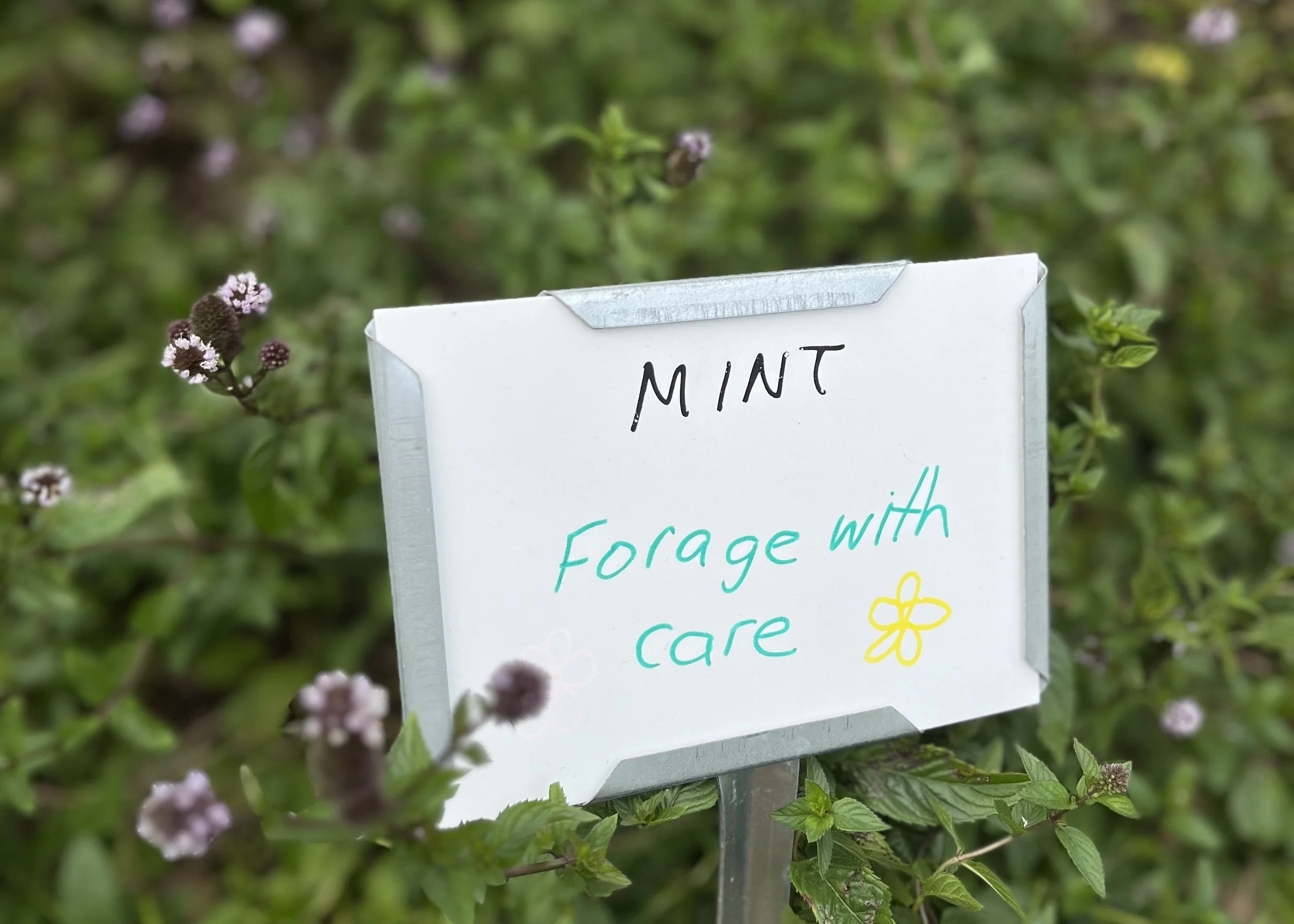Roots in the ground, strength in the community
Teresa Quilty, project coordinator for Ne’ata’q the Food Forest at Bluenose Academy, rests in the shade of a linden tree on a bench built by students.
Teresa Quilty lifts the latch on a gate to what looks like a small garden. She walks on a woodchip path toward an aromatic patch of mint; a handwritten sign asks visitors to forage with care. The mint is growing near the base of a pear tree, heavy with fruit.
“These are our fruit and nut tree guilds,” Teresa explains as she guides a local homeschooling family around Ne’ata’q, the Food Forest at Bluenose Academy in Lunenburg.
The guilds are layers of plant communities growing in mutually beneficial relationships. In a food forest, animals, plants, fungi and soil work together. Some help fertilize the soil. Others attract pollinators or repel pests. Some simply offer shelter.
“Our trees include apple, peach, plum, cherry, hazelnut and more,” Teresa says. There are also berry-producing shrubs, herbs and flowers. Almost all the plants are perennials, meaning they grow back each year.
Teresa is the project coordinator for the community-school partnership project, launched in May 2023. What was once 10,000 square feet of grass on clay-packed soil in the bus loop is now a vibrant place for all to learn, play, eat and connect.
Hundreds of students, staff and volunteers have helped transform this patch of land. Whether gathering storm-cast seaweed for compost, weaving twigs into wattle fencing or watering the herbal tea garden, many hands have worked together over three growing seasons.
She points out a student-made bench in the shade of a linden tree. It’s an ideal spot to notice the sights, sounds and smells. Bees buzz past asters and nasturtiums with bright orange and yellow blooms. Purple lavender and silvery green sage grow alongside the winding path. A wine cap mushroom bed is identified by a sign listing the fungi’s English, French and Latin names.
Teresa leads the visitors to the small Wabanaki forest section. There are over a hundred species of native trees and shrubs, she says, including cedar, birch, walnut, sugar maple, blueberry, haskap and elderberry. She notes the rain garden that was added last year. On this sunny September afternoon, pumpkins ripen on the vine and sunflowers reach for the sky. It’s the literal translation of what Ne’ata’q, pronounced nee-ahdaahk, means in the Mi’kmaw language: “the sun is coming out.”
Jon Hutt, a local homeschooling parent, enjoys a foraged bouquet of anise hyssop and mint.
There are several food forests throughout Nova Scotia, including the Scotsburn Community Food Forest in Pictou County and the Earthling Farm and Food Forest in King’s County. This is the first school-based food forest in the province.
One of the guiding principles at Ne’ata’q is Etuaptmumk, or Two-Eyed Seeing, Teresa says. This is a way of seeing value in multiple perspectives and various ways of knowing.
The project is grounded in Netukulimk – making sure everyone in a community has enough without causing harm to the environment. It is equally important to nourish birds, pollinators and other non-human kin, for example, as it is to grow food and medicine for Bluenose Academy students and the people of Lunenburg.
In this way, the food forest is also a powerful lesson in M’sit No’kmaq, a Mi’kmaw concept of inclusion that translates to “all my relations.”













